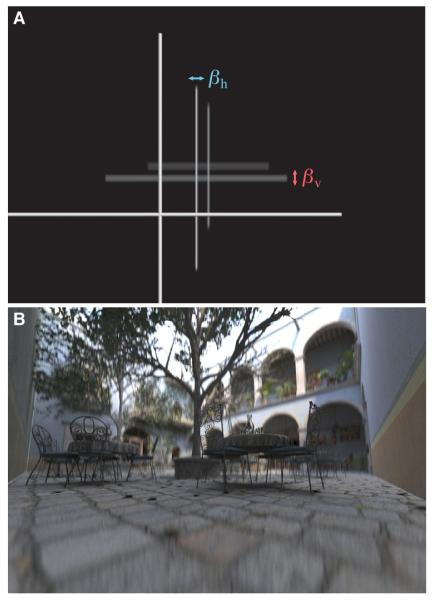Figure 3.
Slit pupils and astigmatic depth of field. Species with vertical slits include the domestic cat, lynx, red fox, swift fox, bushbaby, loris, copperhead snake, gecko, and crocodile [42-44]. Species with horizontal slits or ellipses include the horse, sheep, goat, elk, reindeer, whitetail deer, and red deer [42-44]. A. The retinal image generated by an eye with a vertical-slit pupil. The vertical and horizontal dimensions of the pupil used for rendering are 5.5 and 1.1mm, respectively. The eye is focused on the left-most cross at a distance of 20cm. The other crosses are positioned at distances of 40 and 60cm. The horizontal limbs of the more distant crosses are more blurred than the vertical limbs. B. The retinal image generated by a natural scene. The pupil has the same aspect ratio as in A, but has been magnified by a factor of 10 to make the blur more noticeable in this small image. The eye is focused at a distance of 200cm. Note that the horizontal contours of distant objects are more blurred than the vertical contours. 3D model by Guillermo M. Leal Llaguno of Evolución Visual (http://www.evvisual.com), rendered using the Physically Based Rendering Toolkit (PBRT).

